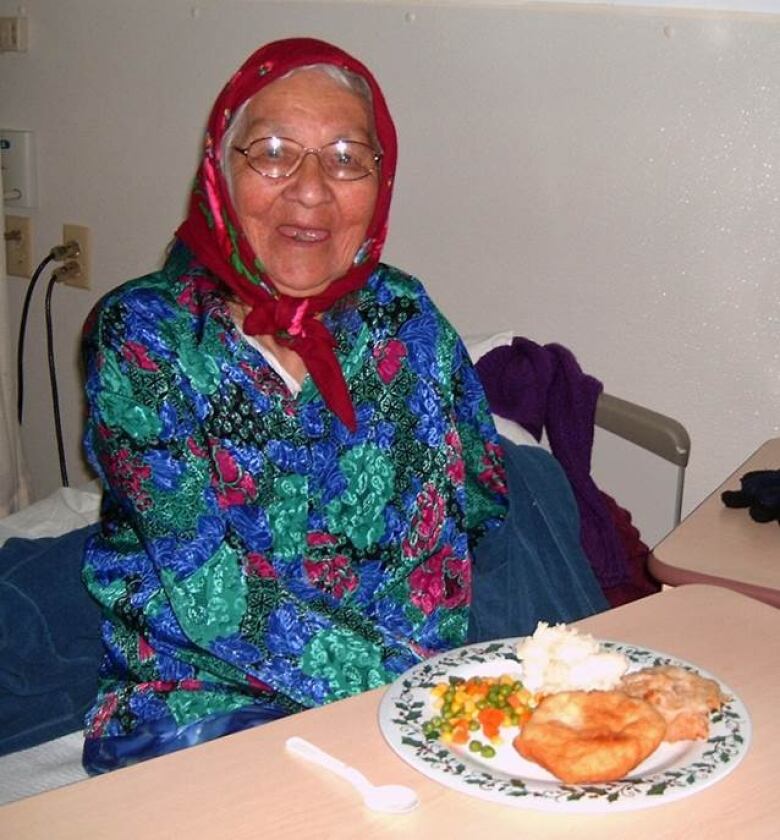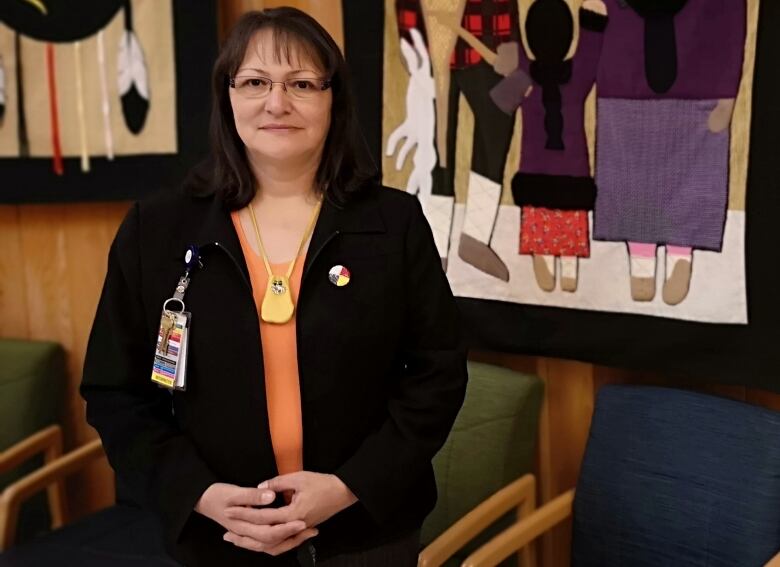'Food is medicine': Sioux Lookout hospital program brings traditional food to patients
Regulations mean traditionally harvested food has to be prepared in separate kitchen

Aplate of baked pickerel with potatoes,vegetables and aslice of bannockis one of the special meals given to patients at Sioux Lookout Meno Ya Win Health Centre every Thursday.
It's part of the Miichim traditional food program co-ordinated by Kathy Loon.
"Food is medicine," saidLoon.
TheAnishinaabewoman has been running theMiichimprogram for the last five years.
"We feel that serving traditional food, ormiichimfood, to our patients is very important culturally, spiritually and nutritionally."
The meal can vary. Sometimes there's moose, caribou, wild birds or beaver, but itdepends on the donations the health centre receivesfrom local hunters or what the Ministry of Natural Resources has confiscated.

Remote northern communities often lack access to affordablefresh food.That hasconsequences that play out in the health of people living there, saidLoon.
"It's hard not to used packaged food," she said. "The more north you go, the less fresh foodyou can get because the growing season is shorter."
A2011 report fromthe Public Health Agency of Canada said the rate of diabetes among First Nations people living on-reserve was 17.2 per cent, among those living off-reserve, 10.3 per cent, and among Mtis, 7.3 per cent.
The diabetes ratein the general Canadian population was five per cent. The rate among Inuit was said to be comparable to the general population.
Avoiding 'triggering' foods
Loon is part of the Indigenous Foodwaysproject through a national program calledNourish,which is working with other Indigenous advisors and health care providers to find ways to raise awareness of the importance of traditional food.

"Really early on we got stories of people who were residential school survivors who had avoided going into hospitals, couldn't eat certain foods anymore that they had been served in residential schools or hospitals because they were triggering," saidHayleyLapalme, the Nourish program's designer and facilitator.
"We set out to build a program that would be sensitive to those realities."
The Nourish program works on improving health care through projects that integrate patient experience, institutional culture and community well being.
Helping patients get well
It takes a lot of work to be able to bring traditional food into a hospital or health centre, saidLoon, because of federal foodsafety regulations.
The Miichim program at Sioux Lookout asks hunters to keep track of where the animals were killed and when, as well as how they have been stored to create a baseline of standards.
Once at the health centre, traditionally gathered or hunted food has to be prepared in a separate kitchen than federally inspected food to avoid cross contamination.
"If you work through that, it can happen where you can serve traditional foods," said Loon.
"Because the patients are eating something they like, they become healthier as well and that's the whole point of a hospital, to get well."
The Indigenous Foodwaysprogram's aim was tocreate a guidebook for organizations looking to start atraditional foods program.












_(720p).jpg)


 OFFICIAL HD MUSIC VIDEO.jpg)
.jpg)



























































































